During the transitional period between fall and winter, there’s nothing like a vibrant red plant to infuse your garden with festive cheer. As the weather becomes grayer, brighten up your landscape with a splash of scarlet or burgundy. There are plenty of plants with delicate red blooms as well as those with striking red foliage. From the low-maintenance burning bush to the ubiquitous poinsettia, here are seven festive red plants to grow for the holiday season.
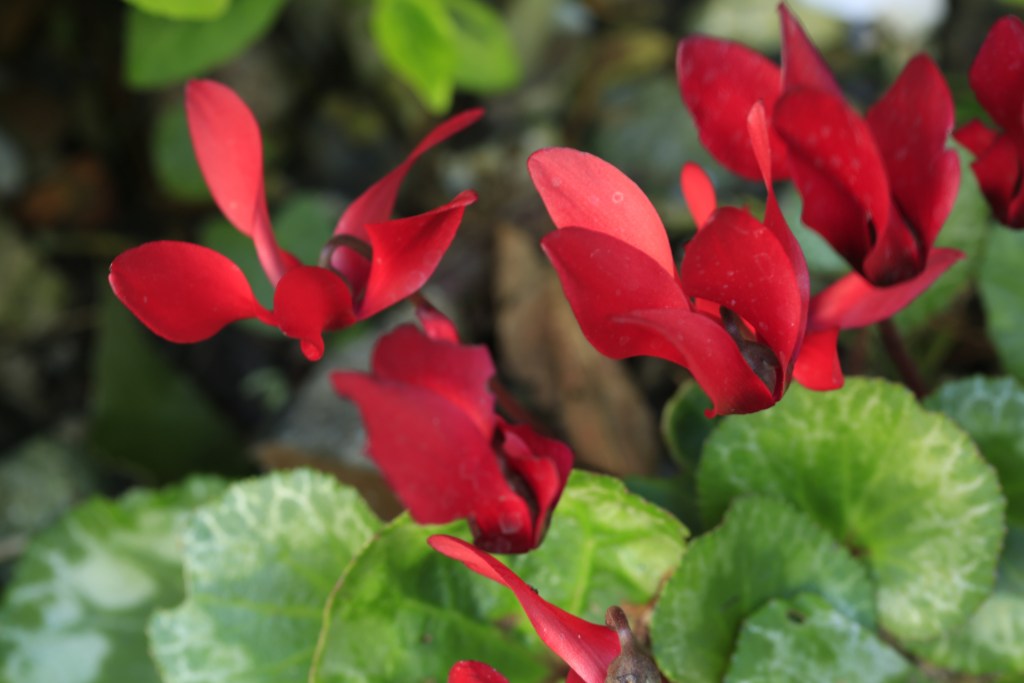
Cyclamen
Cyclamens often hit your local garden centers during the holiday season. This delicate tuberous plant features marbled or matte green leaves with butterfly-shaped white, purple, pink, or of course, red flowers. It blooms during the fall and winter, then goes through dormancy in the summer, during which its foliage dies down. It’s hardy down to 23 degrees Fahrenheit, but it does best around 50 to 65 degrees — consider bringing it indoors during the winter. With this plant, you’ll want to provide adequate bright indirect light for blooms. It also appreciates being watered deeply once its soil dries out, but be careful with overwatering during winter.
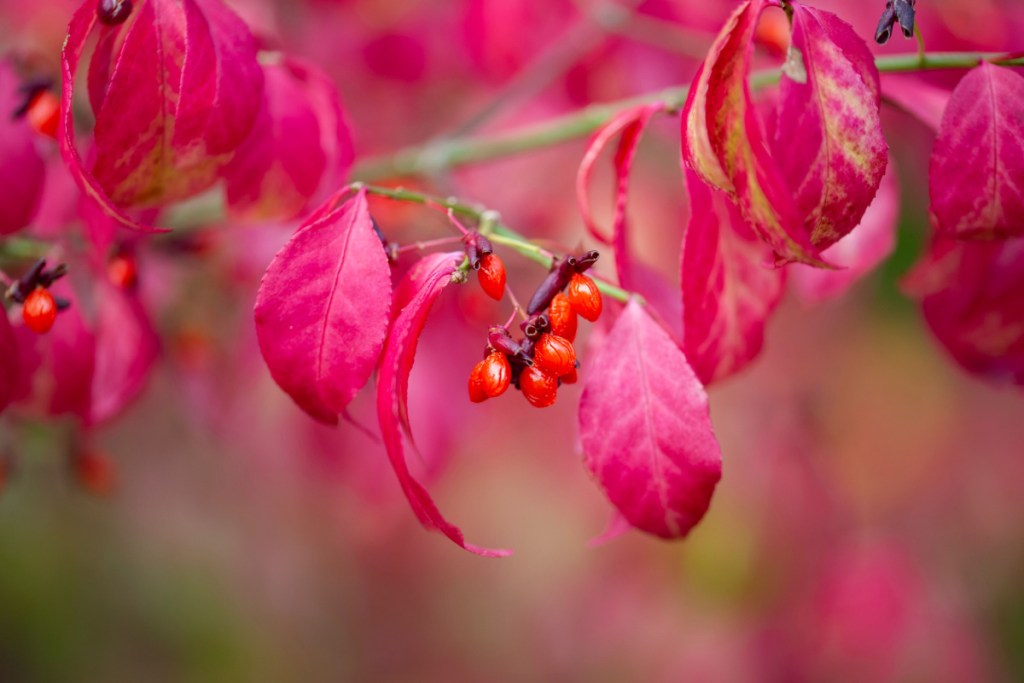
Burning bush
The burning bush is an understated staple in many suburban landscapes. Its name comes from its neon red color, which makes its cluster of pointed leaves resemble a burning bush. This woody shrub is known to be low maintenance. It can thrive in both partial shade and full sun as long as it sits in well-draining soil. There’s no need for fertilizer, although you can feed it early during the spring to help it flourish. With warm conditions and bright sun, it can grow anywhere from nine to 15 feet tall. As such, it’s considered an invasive species in some areas.
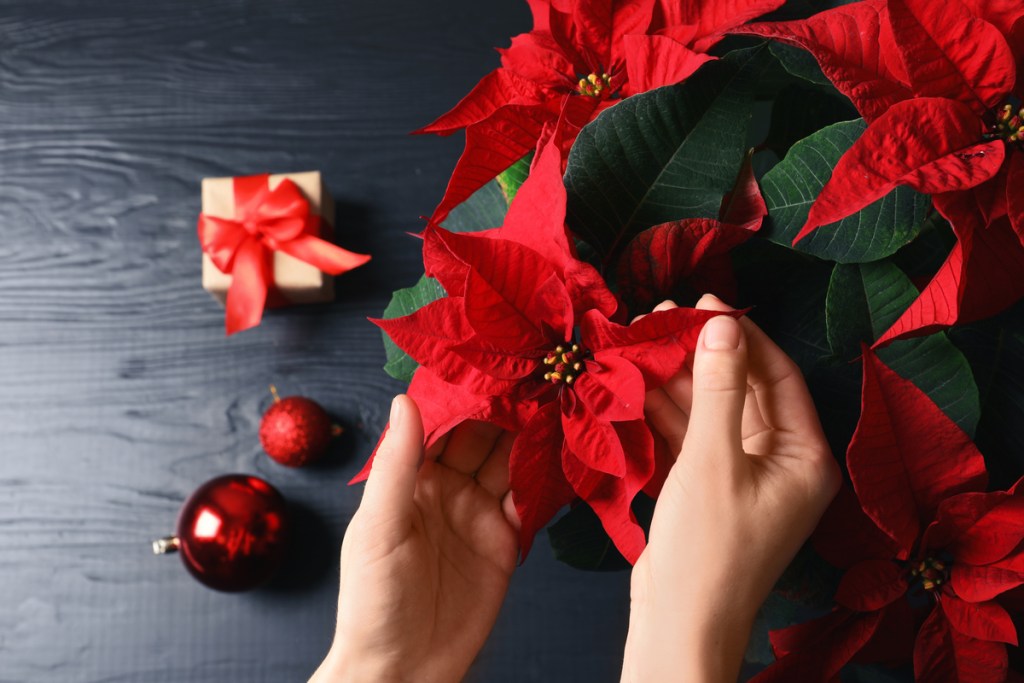
Poinsettia
Come the holidays, poinsettias take over garden centers. The festive red foliage (sometimes white or pink) is often mistaken for flowers. What appears to be petals are, in fact, actually bracts, or modified leaves, with tiny yellow leaves at the center. The poinsettia plant prefers moist soil around room temperature, so it’s often kept as an indoor plant during the winter. If the temperatures drop below 50 degrees Fahrenheit in your area, take your poinsettia inside, or else its leaves may fall off. When inside, make sure not to leave it near drafty windows or drying radiators.
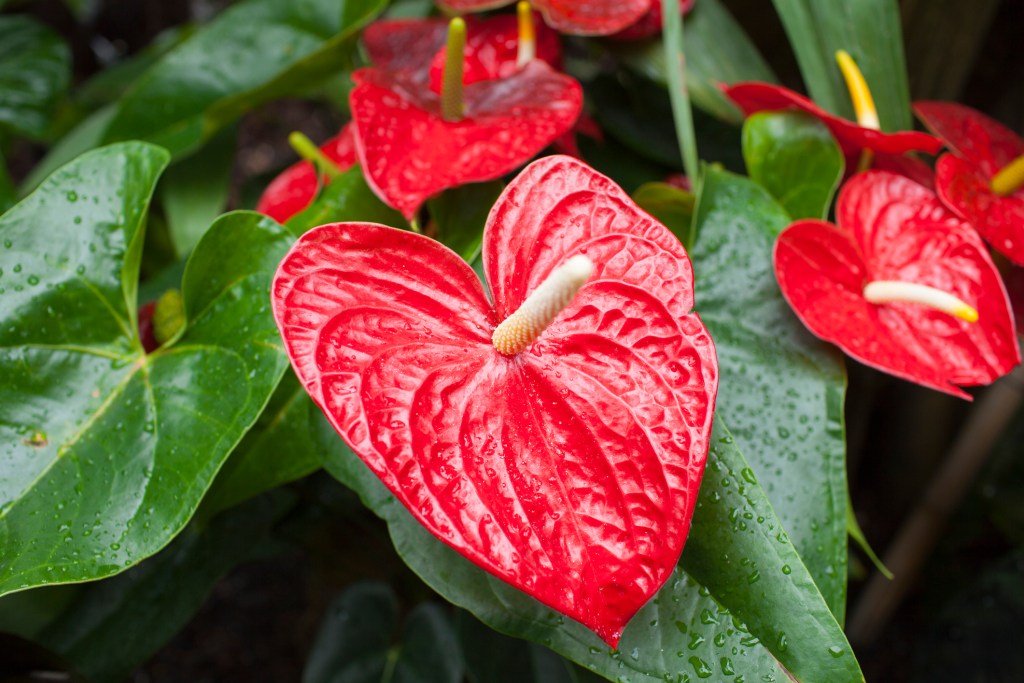
Anthurium
The anthurium plant, sometimes called the flamingo flower, features waxy, colorful spathes that are sometimes mistaken for petals. These spathes, which come in red, pink, purple, orange, and white, are actually leaves that surround the spadix, which produces male and female flowers. Though a hardy indoor plant, the anthurium doesn’t tolerate frost well. It prefers a temperature range of 60 to 90 degrees Fahrenheit, so keep it in a container that you can bring indoors during the winter. Inside, this plant thrives with bright indirect light and consistent watering.
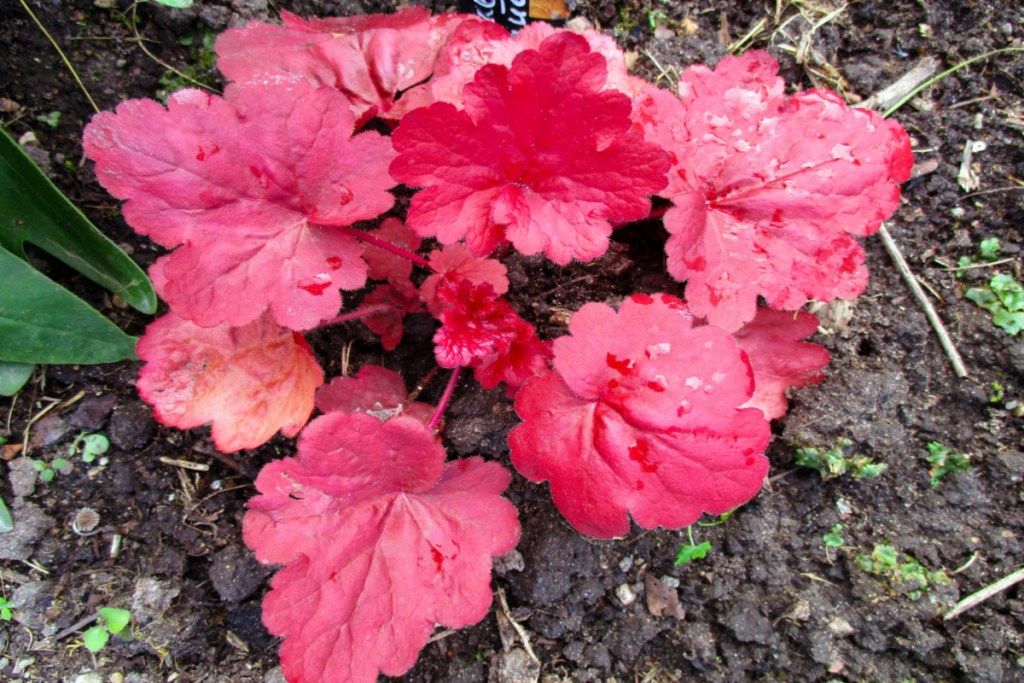
Red coral bell
The red coral bell, also called Heuchera Forever® Red, features deep red foliage during cool springs and falls. It has lobed leaves and thin stems, putting out small white flowers during the growing season. It’s perennial to climate zones 4 through 9, so it’s relatively hardy. If you live in an area with cold winters, consider layering two to three inches of mulch over your soil to insulate your plant and keep it from frost heaving. The coral bell plant does best in moist but well-draining soil mixed with rich compost.
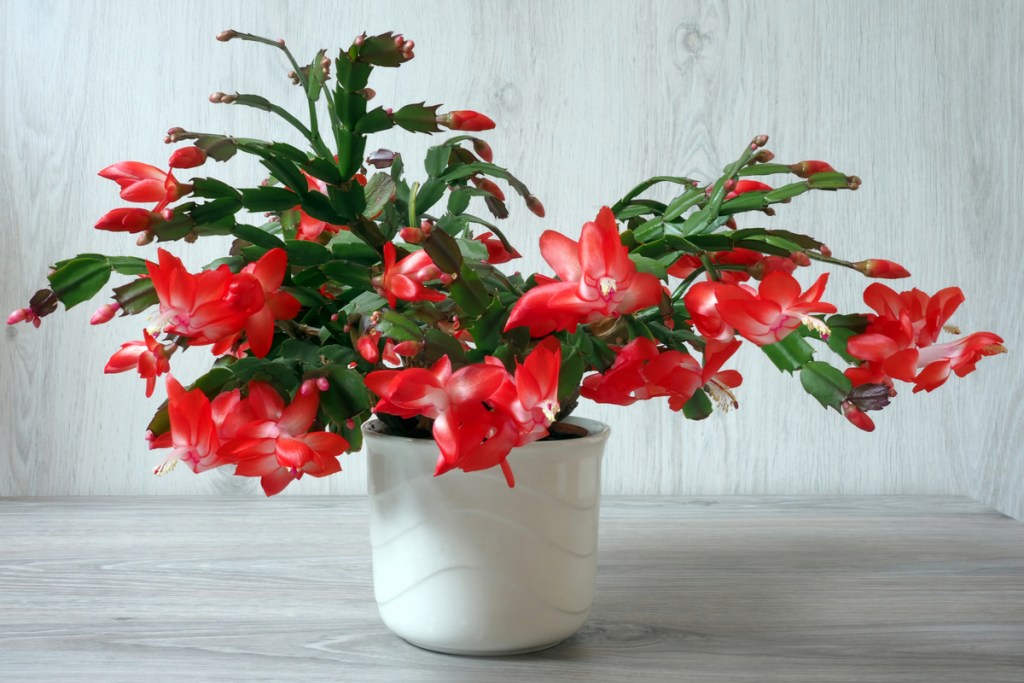
Red Christmas cactus
Another plant that you’ll find hitting your local garden center during the fall and winter is the Christmas cactus. This colorful trailing plant comes with flat, leathery leaves and blooms in red, pink, purple, or white. Though this plant is a succulent, it does prefer its soil to be well-watered and appreciates a moderate level of humidity. For the blooms to appear, the plant needs darkness from the shorter days of winter — you can try to get your plant to bloom by keeping it in a period of darkness for longer.
Redhead Coleus
The Redhead Coleus features velvety red foliage, making it a beautiful addition to any garden landscape for holiday vibes. All in all, it’s a relatively low-maintenance plant, thriving in moist soil and bright light. Though it’s hardy down to 32 degrees Fahrenheit, it will appreciate being grown indoors during the winter in most areas, doing best in a 4- to 6-inch planter. The coleus plant can make for lovely ground cover in springtime, growing up to 3 feet tall and spreading around 2 feet wide.
While we love a crisp red autumn leaf, you can still find beautiful plants with red blooms and foliage that aren’t on the brink of death. To brighten your garden with color, red blooms on Christmas cacti and cyclamens are fail proof, as are red leaves on poinsettias and burning bush shrubs. Even if you need to bring some of these indoors, no worries — the red will bring seasonal cheer into your home.
Editors' Recommendations
- Everything you need to know about choosing the best rocks for landscaping
- 6 tips you should keep in mind when building your own drought-tolerant garden
- Grow your indoor or outdoor garden and support these Black-owned plant shops for Black History Month
- Do you live in climate zone 10? Here’s our guide to choosing the perfect climate zone 10 plants
- What to do with an old Christmas tree: 6 ways to recycle your tree after the holidays





